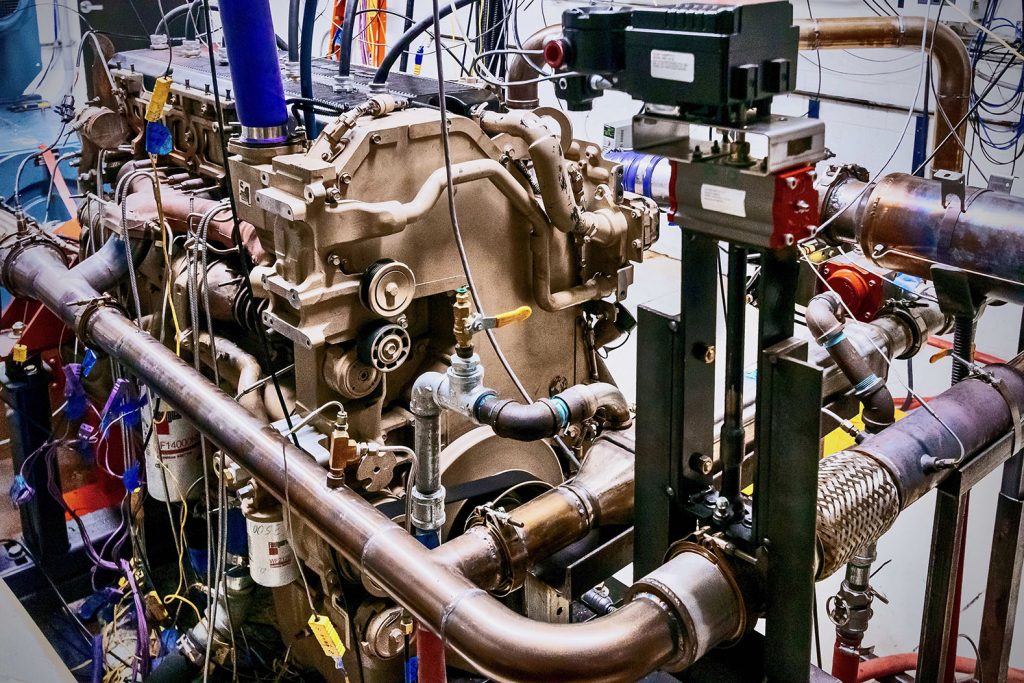🤔 Wouldn’t it be cool to do a deep dive into other country’s climate policies…Like we could go as far as going to another country. Hell, why not send me to Bhutan……..because you’d want to learn about how their policies could translate to advantages for your business strategy…right?
THE TL;DR 💨
🌳 Bhutan Is Carbon Negative – What The US Can Learn From Them
- Bhutan gets 99% of its energy from hydropower. It produces so much excess it sells most of it to India
- Since the energy infrastructure is owned by the government it looks to provide electricity across the country as a “public benefit”. Ie. for free
- If the US were to move utilities to entirely publicly owned, as opposed to keeping them private, it could allow for the electrification transition to occur quickly as decisions would be made based on the public’s interests as opposed to only financials
- If utilities were state-owned – state residents could receive electricity at a subsidized rate and the state can recover its costs through trading capacity over to other states, for example
💥 How To Convert A Diesel Engine To Run On Ethanol
- Clearflame upgrades fuel injection systems to work with alternative fuel sources like Ethanol
- Diesel engines are incredibly efficient, but the energy source used is bad for the environment. Swap the diesel out and you have a climate-friendly, efficient engine
- EVs and electrification are great and necessary, but have shortcomings when looking at heavy duty loads and transportation – an Ethanol diesel engine would help fill that application gap EVs can’t effectively solve
📃 POLICY & FINANCE
Bhutan Is Carbon Negative - What The US Can Learn From Them
By Swarnav S Pujari

Globally countries are aggressively looking at how they can reduce the climate impacts of their emissions through things like electrification and switching their power sources over to renewable sources.
For many countries like the US, or places like the EU, policy becomes the primary driver in enabling a transition away from fossil fuels. This is where a country like Bhutan can provide valuable insights though it is vastly different in its economic and political structure.
Bhutan is carbon negative and produces 99% of its energy needs from hydro
Now, this isn’t due to major economic developments or major infrastructure investments. Much of the country remains underdeveloped in rural areas due to the complexity of the mountainous terrain they are situated in (Bhutan is in between India and China in case you’re wondering). Also, 70% of the country is covered in forests which allows it to be a low emitter and still achieve carbon neutrality with ease.
However, Bhutan’s approach to energy policy in the country is fascinating. The memo (linked previously) they wrote back in 2009 has a ton of breadcrumbs on how they approach the export of electricity as a means to drive economic development within the country.
Bhutan gets more than they can ever use – even if they electrified the rural parts of their country – in hydropower which leads them to sell excess capacity over to India. Which allows them to provide electricity to their residents for free, in an effort to incentivize the rural part of their country to switch from burning wood to using the excess hydropower they have available.
The US can accelerate the clean transition by switching to state-owned/subsidized electric utilities
The complexity in navigating such a move would likely require a full election cycle to even get something through congress. However, it may be one such approach towards incentivizing significant infrastructure and economic development stateside – better yet we already have municipality-owned utilities so there is a potential framework to work within.
Playing within hypotheticals and modeling a world around Bhutan’s “electricity as a public service benefit” model, we’d see states provide electricity at a significantly reduced rate or entirely subsidized for critical businesses or low-income neighborhoods. In theory, under this model state-owned utilities could recover or benefit from cross-selling state to state within their current ISO under demand response level rates.
For example, If Oregon has excess capacity available and California is dealing with its standard demand response periods it could purchase from Oregon. While this already happens to a degree, moving towards the government setting a price floor on electricity and subsidizing a lot of the cost of supplying that demand through renewable assets it owns can open up the market to new solutions that deliver additional benefits.
People may become willing to pay premiums for additional resiliency or even purchase solar for their home if they used more than their “free baseload” which could drive electrification at a faster rate.
Access and price tend to be the core drivers in which source of power is adopted - as demonstrated in Bhutan
If the US can find a way – similar to Bhutan to publicly fund infrastructure for electricity at a higher rate, beyond the current tax incentives – it could drive significant growth in electrification across the country.
With publicly owned utilities being the primary providers of electricity to the country it allows for infrastructure funding to be wrapped up into bonds backed by the US government and allows for the government to decommission power plants not aligned with the public’s interest even if it results in short term losses. Keeping most of the energy infrastructure in quasi-public/private ownership slows transitions down as many of these assets were invested into using 25+ year projections.
Bhutan shows the benefits of a model that may be applicable in the US. While their situation is far less complex than the US’ decarbonization path it lays the groundwork that shows what a public-owned utility may be able to achieve.
Sign up for The Impact and learn the perspectives behind the latest sustainability trends
🚀 STARTUPS & TECH
How To Convert A Diesel Engine To Run On Ethanol
By: Daniel Kriozere

Electrification of everything is a growing trend in the market. However, electrification is not necessarily the be all, end all solution, especially when it comes to transportation. ClearFlame Engine Technologies offers a complementary solution to reducing emissions from diesel engines. BJ Johnson, ClearFlame CEO and co-founder, talks about how the company is enabling heavy-duty and off-highway industries to transition to fossil-free heavy-duty powertrains faster and at a lower cost than any alternative.
What is the larger problem you're trying to solve? And How's ClearFlame fitting in to solve this problem?
Before talking about ClearFlame, I want to provide some context – when we talk about the energy problem, there really are two halves to it. There is the fact that energy generation today is very fossil-intensive, and we’re also existing in a world where quality of life is still improving for billions of people.
Access to goods and electricity that are enabled by diesel engines are significant components of quality of life. ClearFlame’s mission is to bring rapid and cost-effective decarbonization to sectors that are hard to electrify. We are expanding access to energy in a way that’s sustainable.
To do this, we’ve developed a solution for a diesel engine so that it can operate without the use of diesel fuel. We instead utilize decarbonized liquid fuel, like ethanol or methanol that you can make from renewable sources. This reduces greenhouse gas emissions, particulate matter and smog, helping to improve air quality and mitigate climate change.
So how does it work? A very simple way of describing our technology is that if you get anything hot enough, it will burn. We take the fuel injection system and make it compatible with a different fuel. Alcohols have lower lubricity, which translates to having a higher flow rate. ClearFlame is engineering the fuel systems to handle higher temperatures, and we can do this while keeping 80-90% of the engine parts the same.
A diesel engine is one of the most efficient mobile energy conversion devices that we have. The issue is not the engine, it’s the fuel that’s used in it. Our solution allows engine manufacturers to decouple the performance benefits from the fuel challenges.
Why did you choose to chase this problem?
OEMs and engine manufacturers, particularly in the heavy-duty sector, tend to follow market trends. My co-founder, Julie, and I realized that if we wanted to get this sector to shift at the pace the planet requires, we need to lead from the front. We have to go out there, make our product, engage with customers, prove it works, and then get OEMs to adapt after we’ve done that early customer engagement. Without that we’d be waiting 10 years for people to realize the shortcomings of EV before anyone even thinks about something like this.
How have you thought about impact?
I’d like to make sure we define impact because there are really two challenges associated with diesel – there’s the carbon output and then there’s the air quality criteria.
When it comes to carbon benefits, that’s one that’s easily to quantify through your standard life cycle analysis. By using inherently clean burning fuels, we can drastically eliminate soot and smog – we can get to no soot in the engine, reduce smog to almost zero. We can preserve local air quality and see impact immediately.
Of the 38 gigatons of CO2 emitted today, about five gigatons are coming directly from these heavy-duty diesel engines, mostly trucks, as well as equipment, construction, rail, and marine. ClearFlame engines provide a 45-50% reduction in emissions, so we are looking at roughly 2.5 gigatons of CO2 reduced. It’s not a perfect product, but still a big move in the right direction, and actually a larger reduction in CO2 than you would get to switching to electrification, because the grid still has carbon intensity as well.
One of the messages we’re trying to get out there is that we need to work with what we have today and work in parallel to make sure those quantifiable metrics continue to improve in the future. ClearFlame can have real impact today.
What does the competition look like today?
Electrification is happening and it’s real, and I’m a big believer. I don’t view electrification as competition, I view it as complimentary – where electrification is great for lighter loads and shorter range, ClearFlame’s use case is for heavy loads over long distances.
When you look at what else is being done to decarbonize engines, there’s a lot of talk right now about what can be done with renewable diesel fuel, with renewable natural gas. There’s a lot of people talking about just using the same old engine and innovating on the fuel side. The challenge with any alternative fuel strategy is, it is simply doesn’t exist at scale yet. As an example, when people are considering putting renewable diesel into trucks, they’re probably ignoring the fact airlines also want to buy all the renewable diesel we can produce.
Alternative fuels are not a solution that makes sense when you consider the other possible uses of the fuel. Taking this into consideration, we chose ethanol for ClearFlame because we have it at scale today.
How is policy and/or the market supporting growth in this sector?
Fuel producers are getting very serious about the carbon intensity of their products. We’ve heard the oil companies talking about it. The alternative fuel companies have been saying it for a decade. States like Washington, my home state, have now officially adopted a low-carbon fuel standard. And a lot of other states are thinking of ways to incentivize lower carbon fuels over higher carbon fuels. The Renewable Fuel Association is talking about what the pathway to getting to net carbon zero ethanol looks like.
After ClearFlame succeeds, what does the future look like? What's next after that, in terms of the market?
ClearFlame’s success means we will have a solution that allows us to start moving towards our climate goals faster and have a tremendous amount of flexibility to how we meet those goals in the future.
I’d like to believe that, at some point, we’ll have a grid that’s entirely based on fusion power, and we’ll have inductive electric charging built into all of our roads. And by our roads, I don’t just mean in the United States, but everywhere in the world but we know will take time to achieve. When ClearFlame is successful, there’ll be more people seeing that we can get to carbon neutrality by 2050 because we don’t have to rely on everything being electric.
Outlook
Electrification is a huge trend. However, people are starting to realize that not everything is going to be electrified in the near future. BJ mentioned that we’re a long way away from having electric 787s, and as a result, the market for alternative fuels is growing.
While there’s not a single silver bullet solution for decarbonizing heavy-duty industry, BJ says there are certainly options like ClearFlame’s that are available today. “The sooner we realize there are a wide range of solutions, the sooner we can start decarbonizing transport on a whole different range of fronts.”
Writers: Swarnav S Pujari, Daniel Kriozere
If you aren’t absolutely thrilled with The Impact, reply and let us know why. Or you can unsubscribe from all updates by clicking here.
Copyright © The Impact 2021. All Rights Reserved || 19 Morris Ave, Bldg 128, Brooklyn NY 11205

